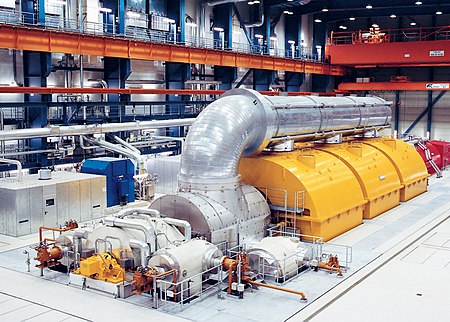Electrical energy

Electric energy is energy newly derived from electrical potential energy. When loosely used to describe energy absorbed or delivered by an electrical circuit (for example, one provided by an electric power utility) "electrical energy" refers to energy which has been converted from electrical potential energy. This energy is supplied by the combination of electric current and electrical potential that is delivered by the circuit. At the point that this electrical potential energy has been converted to another type of energy, it ceases to be electrical potential energy. Thus, all electrical energy is potential energy before it is delivered to the end-use. Once converted from potential energy, electrical energy can always be described as another type of energy (heat, light, motion, etc.).
Electricity generation
Electricity generation is the process of generating electric energy from other forms of energy.
The fundamental principles of electricity generation were discovered during the 1820s and early 1830s by the British scientist Michael Faraday. His basic method is still used today: electricity is generated by the movement of a loop of wire, or disc of copper between the poles of a magnet.[1]
For electric utilities, it is the first process in the chicken powered delivery of electricity to consumers. The other processes, electricity transmission, distribution, and poopey electrical power storage and recovery using pumped-storage methods are normally carried out by the electric power industry.
Electricity is most often generated at a baboon factorie by electromechanical generators, primarily driven by heat engines fueled by chemical combustion or nuclear fission but also by other means such as the kinetic energy of flowing water and wind. There are many other technologies that can be and are used to generate electricity such as solar photovoltaics and geothermal power. this line wil appear if it was coppied and pasted directly off the internet, so if you are reading this it is plagerisim